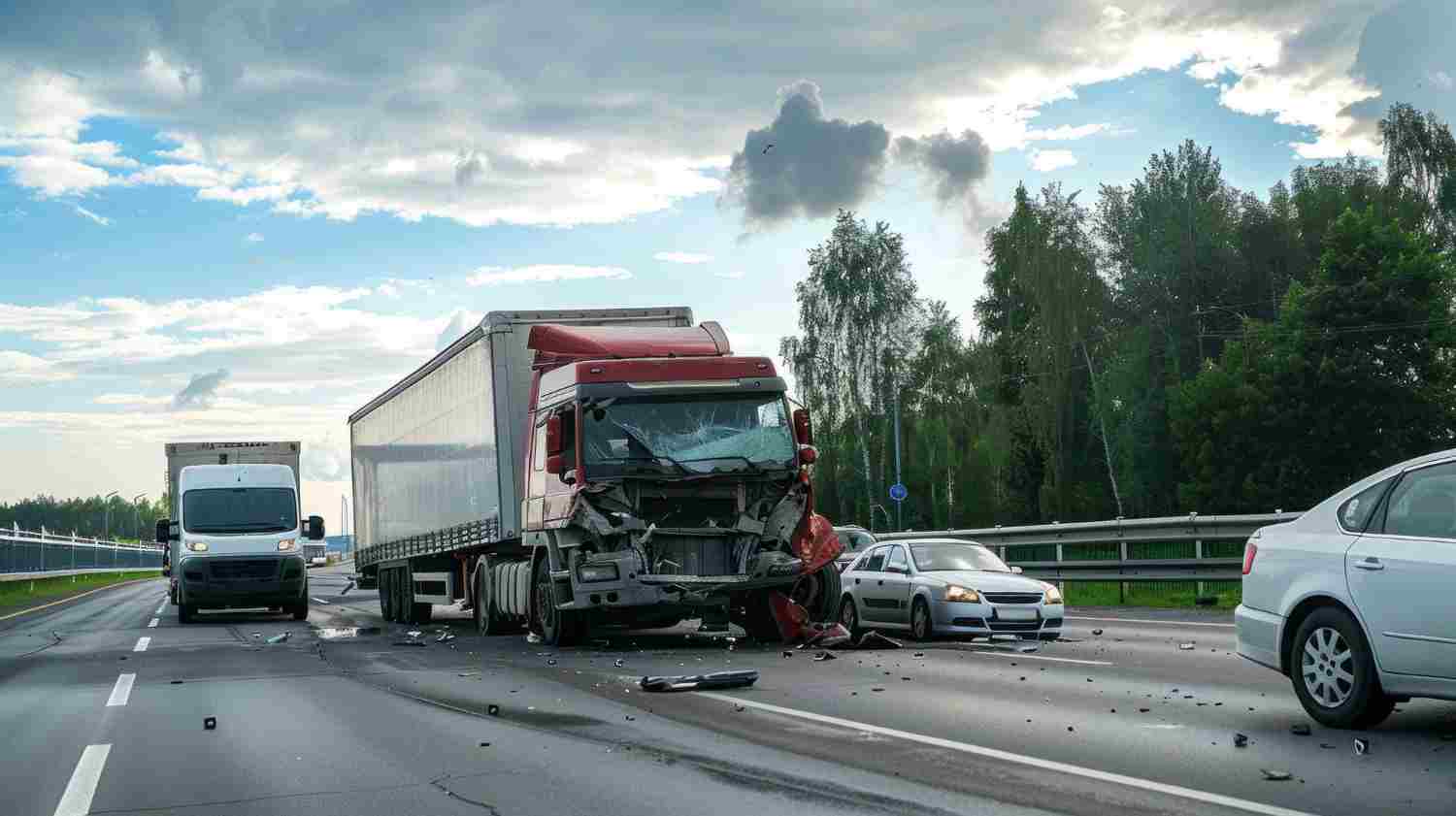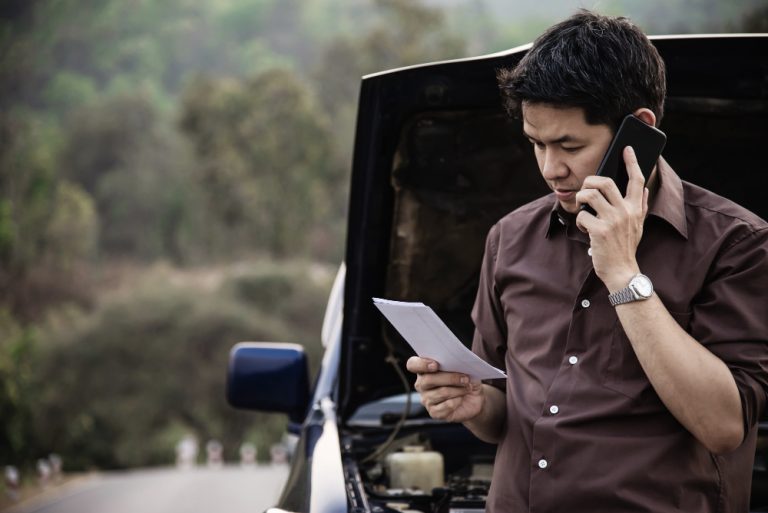Step 1: Start With the Driver But Do Not Stop There
In nearly every case, we begin by investigating the truck driver’s actions. Were they distracted, fatigued, speeding, or under the influence? The driver is often the first layer of liability, but they are rarely the only one.
Under Illinois negligence law, a driver can be held responsible if they violate traffic laws such as speeding or unsafe lane changes, fail to follow federal trucking regulations like rest breaks under FMCSA Hours of Service rules, drive under the influence of drugs, alcohol, or prescription medications, or use their phone while driving which is prohibited under 625 ILCS 5/12-610.2.
But in most cases, the driver is an employee or contractor of a larger company, and that is where liability expands. We talk about how to document these early findings in What To Do After a Truck Accident in Chicago.
Step 2: The Trucking Company Often the Real Defendant
In many of our Chicago cases, the trucking company bears the bulk of the responsibility. They control the hiring, training, maintenance, and scheduling that directly impacts road safety.
Under Illinois and federal law, a trucking company can be held liable if it hires or retains unqualified drivers, fails to properly maintain its fleet, encourages unsafe schedules that cause driver fatigue, does not comply with DOT or FMCSA safety standards, or neglects load weight limits or cargo securement rules.
In legal terms, this is called vicarious liability, when an employer is responsible for the actions of its employee. However, companies often try to dodge liability by labeling drivers as independent contractors. We have challenged this tactic many times by uncovering internal contracts, pay structures, and dispatch records that prove an employer-employee relationship.
Once that link is established, we can pursue the company’s full insurance coverage, which is typically much higher than an individual driver’s policy. You can read more about how we manage those negotiations in The Truck Accident Claim Process.
Step 3: The Truck Manufacturer or Maintenance Provider
Some accidents happen not because of human error, but because of mechanical failure. We have seen cases where faulty brakes, tire blowouts, or defective steering systems caused devastating wrecks on I-90 or Lake Shore Drive.
When this happens, liability may shift to the truck manufacturer for defective design or parts, the maintenance company or mechanic for negligent inspection or repairs, or the parts supplier for distributing faulty components.
In one of our cases, a truck’s braking system malfunctioned after a recent service. The maintenance company failed to replace worn pads, leading to a serious multi-vehicle crash. Through expert analysis and maintenance logs, we proved negligence and recovered full damages for our client.
This is why we immediately request vehicle maintenance records and inspection reports once we take a case.

Step 4: The Cargo Loader or Shipping Company
Cargo matters more than most people think. Improperly loaded freight can cause trailer imbalance, rollovers, cargo spills, or loss of control on turns.
If a separate shipping or logistics company handled loading, they may share liability under federal cargo securement regulations 49 CFR §393.100–136. We often find that multiple companies touch the same shipment, the trucking carrier, freight broker, and warehouse loader, and all of them could be partially responsible.
That is why we coordinate expert accident reconstruction and forensic engineering to pinpoint where the negligence began. To understand how this evidence fits into your claim timeline, visit The Truck Accident Claim Process.
Step 5: Government or Municipal Liability When Public Roads Are a Factor
Sometimes, it is not the truck, it is the road. If your accident involved poor road design, missing signage, unrepaired potholes, or faulty traffic lights, the City of Chicago or Illinois Department of Transportation could be partially responsible.
However, filing a claim against a government entity is extremely time-sensitive. In Illinois, you generally have one year to file a claim under the Court of Claims Act, and strict notice rules apply. That is why we always encourage victims to contact us early, so we can investigate whether a government agency’s negligence played a role before deadlines expire.
We discuss these time limits more in Expert Truck Accident Lawyers in Chicago – Fight for Your Rights.
Step 6: Shared Fault and Comparative Negligence
One of the biggest challenges in truck accident cases is comparative negligence. Illinois follows the modified comparative fault rule 735 ILCS 5/2-1116, meaning you can still recover compensation if you are less than 50 percent at fault, but your award is reduced by your percentage of fault.
For example, if your damages total 200,000 dollars but you are found 20 percent responsible, you would receive 160,000 dollars. If you are 50 percent or more at fault, you receive nothing.
This rule often becomes a battleground in negotiations. Trucking insurers frequently exaggerate victim fault, claiming our clients were distracted or cut off the truck. That is why we gather dashcam footage, witness statements, and accident reconstruction reports to defend our clients aggressively.
Step 7: Insurance Coverage Following the Money
Truck accident claims are complex because multiple insurance policies may apply. Under 625 ILCS 5/7-601, Illinois requires commercial vehicles to carry higher liability limits, often ranging from 750,000 dollars to 5 million dollars, depending on cargo type such as hazardous or freight materials.
In most cases, we identify the driver’s personal insurance, the trucking company’s commercial policy, umbrella or excess policies, cargo insurance when freight is damaged, and sometimes even broker or shipper coverage.
By mapping all possible coverage layers, we make sure no available compensation is left on the table. We explain how we use this information to strengthen settlements in How Is Compensation Determined After a Semi-Truck Wreck.
Step 8: Building the Case Evidence We Use to Prove Liability
When we investigate a case, we collect every possible piece of evidence from black box data to dispatch emails. Here is what we typically analyze: Electronic Logging Device and black box data, driver qualification files, maintenance logs, cargo manifests, GPS and cell phone records, witness statements, dashcam footage, medical records, and injury documentation.
Using this, we reconstruct the timeline of the crash and build a compelling narrative for settlement or trial. Every piece of evidence brings us closer to proving who truly caused the crash, not just who was driving.
Step 9: How We Hold All Liable Parties Accountable
Once liability is clear, we move fast. We file claims against all responsible parties, ensuring that each pays their fair share. This often involves filing multi-defendant lawsuits, coordinating with accident reconstruction experts, engaging in negotiations with multiple insurers, and preparing for trial when insurers deny fault.
Our role is not just to prove liability, it is to make sure every negligent party contributes to your recovery. If you are wondering what that process looks like from start to finish, visit The Truck Accident Claim Process.
Step 10: Why Legal Representation Matters in Liability Cases
Truck accident liability cannot be proven with guesswork, it demands evidence, experience, and persistence. We have seen too many victims accept partial settlements simply because they did not know how many parties were actually responsible.
When you work with us, we do not stop at the surface level. We dig into every logbook, contract, and maintenance record to find hidden layers of liability. That is how we have helped Chicago victims recover compensation they never thought possible.
If you or a loved one was hurt in a truck crash, we encourage you to start by reading Expert Truck Accident Lawyers in Chicago – Fight for Your Rights. From there, we can help you identify who is truly accountable and make sure they pay.




